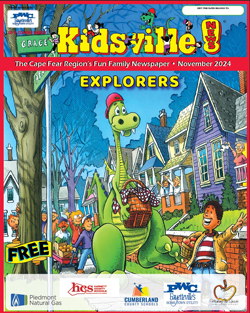 Walk or drive down the streets of Fayetteville during the busy workweek (or during one of the city’s many special events in the evenings and on the weekends) and one can’t help but notice the revitalizing effects of the city’s renaissance over the past few years. The changes are impressive. The renovation of older buildings and new construction have brought a variety of new businesses and dining and entertainment venues, as well as elegant living spaces to a place with a history that dates to pre-Revolutionary War times, before the merging of the settlements of Campbellton and Cross Creek to create the city of Fayetteville in 1783.
Walk or drive down the streets of Fayetteville during the busy workweek (or during one of the city’s many special events in the evenings and on the weekends) and one can’t help but notice the revitalizing effects of the city’s renaissance over the past few years. The changes are impressive. The renovation of older buildings and new construction have brought a variety of new businesses and dining and entertainment venues, as well as elegant living spaces to a place with a history that dates to pre-Revolutionary War times, before the merging of the settlements of Campbellton and Cross Creek to create the city of Fayetteville in 1783.
On Sunday, Sept. 9, history buffs, teachers and anyone interested in Downtown, architecture, historic planning or historic preservation can take a walk through time as they stroll Fayetteville’s historic Downtown District, listed on the National Register of Historic Places, for a tour of the area’s architectural styles. The tour, free and open to the public, begins at 3 p.m. at the Cumberland County Library, 300 Maiden Lane. Tour members should wear comfortable clothing and walking shoes.
Bruce Daws, City Historian and Historic Properties Manager, will lead the tour, as participants explore Downtown Fayetteville’s collection of commercial, public, residential and religious buildings dating from the late eighteenth century to the mid-twentieth century.
In addition to examining how Fayetteville was designed, its layout and historic landscape features that helped define how early Fayetteville was developed, participants will visually examine the various layers of development, as well as learn about the form and function of the Market House, the only National Landmark in Cumberland County.
“The Downtown Historic District has statewide significance as a remarkably intact town center,” said Daws. “Government, commercial and residential buildings from 1788 to the 1950s stand along the picturesque meanders of Cross Creek and the elegant classical avenues of the 1783 town plan. And Fayetteville is the only town in North Carolina to retain its antebellum town hall (Market House) in the center of market square.”
The tour also includes the opportunity to examine the character-defining architectural details found in the Historic District, to include Federal, Greek revival, Second Empire, Italianate, Romanesque, Colonial, Art Deco and Moderne. Participants will receive educational handouts and review new construction in the Historic District and the requirements for these projects.
“Fayetteville’s historic built environment provides a tangible link with our past and defines the character of our city,” Daws said.
For more information, please call (910) 433-1457, 433-1458 or 433-1944.
Photo: Liberty Point played a significant role in Fayetteville’s history.

 How to resolve AdBlock issue?
How to resolve AdBlock issue? 








